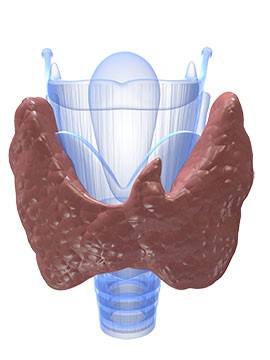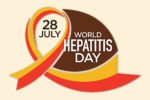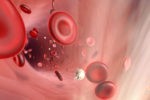January is Thyroid Cancer Awareness Month

Story by Cheri Woodsmall
Joyce woke up on a cold January morning in 2012, and she knew something was not right. Living a very healthy lifestyle, she made it a point to be very in-tune with her body. “You know those people who know they are sick before they REALLY know they’re sick. That is me. Days before I got a cold, my throat would always have a slight burn to it. My husband always makes fun of me about my “sick sense,” she says as she chuckles a bit.
So that morning in January when she could barely get out of bed because her joints were painful and swollen, she immediately called her doctor and got in for an appointment, and was diagnosed with hypothyroidism. Her thyroid levels were dismal. Her doctor put her on thyroid medication and for about 6 months, she was feeling great. Then she noticed a butterfly-shaped rash on her throat. After going back to the doctor and getting further testing, she was diagnosed with papillary thyroid carcinoma.
 WHAT IS THYROID CANCER?
WHAT IS THYROID CANCER?
Thyroid cancer is a form of malignant cell growth originating in the thyroid gland. Located at the base of one’s neck, just below the voice box (Adam’s apple), this small organ plays a significant role in regulating body functions such as metabolism, heart rate, blood pressure, and temperature. The butterfly-shaped organ typically cannot be seen or felt. Made up of two lobes, the right lobe and left lobe, connected by a narrow strip known as the isthmus, this gland produces hormones essential to everyday bodily functions.
The thyroid gland has 2 main types of cells:
- Follicular cells use iodine from the blood to make thyroid hormones, which help regulate a person’s metabolism. Having too much thyroid hormone (hyperthyroidism) can cause a fast or irregular heartbeat, trouble sleeping, nervousness, hunger, weight loss, and a feeling of being too warm. Having too little hormone (hypothyroidism) causes a person to slow down, feel tired, and gain weight. The amount of thyroid hormone released by the thyroid is regulated by the pituitary gland at the base of the brain, which makes a substance called thyroid-stimulating hormone (TSH).
- C cells (also called parafollicular cells) make calcitonin, a hormone that helps control how the body uses calcium.
Other, less common cells in the thyroid gland include immune system cells (lymphocytes) and supportive (stromal) cells.
Different cancers develop from each kind of cell. The differences are important because they affect how serious cancer is and what type of treatment is needed.
Many types of growths and tumors can develop in the thyroid gland. Most of these are benign (non-cancerous) but others are malignant (cancerous), which means they can spread into nearby tissues and to other parts of the body.
WHAT ARE THE SIGNS AND SYMPTOMS?
Thyroid cancer can cause a variety of physical symptoms, including:
– Swelling or a rapidly growing lump on the neck
– Pain in the front of the neck, sometimes extending to the ears
– Voice changes such as hoarseness that do not improve with time
– Difficulty swallowing or breathing
– Unexplained joint pain and fatigue
– Feeling abnormally hot or cold
– An unrelenting cough that is not associated with a common cold
WHAT TESTS ARE DONE TO DIAGNOSE THYROID CANCER?
Thyroid cancer may be diagnosed after a person goes to a doctor because of symptoms, or it might be found during a routine physical exam or other tests. If there is a reason to suspect you might have thyroid cancer, your doctor will use one or more tests to confirm the diagnosis. If cancer is found, other tests might be done to find out more about the cancer. These tests include, but may not be limited to:
- Imaging Tests
- Ultrasound
- Radioiodine scan
- X-Rays
- CT
- MRI
- PET Scan
- Biopsy
- Vocal Cord Exam
- Blood Tests
- T3 and T4 levels
- Thyroid-stimulating hormone (TSH)
- Thyroglobulin
- Calcitonin
- Carcinoembryonic antigen
STAGING AND TREATMENT
After someone is diagnosed with thyroid cancer, doctors will try to figure out if it has spread, and if so, how far. This process is called staging. The stage of cancer describes how much cancer is in the body. It helps determine how serious cancer is and how best to treat it. Doctors also use cancer’s stage when talking about survival statistics.
Thyroid cancers range from stages I (1) through IV (4). As a rule, the lower the number, the less cancer has spread. A higher number, such as stage IV, means cancer has spread more. And within a stage, an earlier letter means a lower stage. Although each person’s cancer experience is unique, cancers with similar stages tend to have a similar outlook and are often treated in much the same way. The staging system most often used for thyroid cancer is the AJCC (American Joint Committee on Cancer) TNM system, which is based on three key pieces of information:
- The extent (size) of the tumor (T): How large is the cancer? Has it grown into nearby structures?
- The spread to nearby lymph nodes (N): Has the cancer spread to nearby lymph nodes?
- The spread (metastasis) to distant sites (M): Has the cancer spread to the distant organs such as the lungs or liver?
Cancer staging can be complex, so ask your doctor to explain it to you in a way you understand.
The treatment options for thyroid cancer might include:
- Surgery for Thyroid Cancer
- Radioactive Iodine (Radioiodine) Therapy for Thyroid Cancer
- Thyroid Hormone Therapy
- External Beam Radiation Therapy for Thyroid Cancer
- Chemotherapy for Thyroid Cancer
- Targeted Drug Therapy for Thyroid Cancer
 Papillary thyroid cancer
Papillary thyroid cancer
| SEER Stage | 5-Year Relative Survival Rate |
| Localized | near 100% |
| Regional | 99% |
| Distant | 75% |
| All SEER stages combined | near 100% |
Follicular thyroid cancer
| SEER Stage | 5-Year Relative Survival Rate |
| Localized | near 100% |
| Regional | 98% |
| Distant | 63% |
| All SEER stages combined | 98% |
Medullary thyroid cancer
| SEER Stage | 5-Year Relative Survival Rate |
| Localized | near 100% |
| Regional | 90% |
| Distant | 40% |
| All SEER stages combined | 89% |
Anaplastic thyroid cancer
| SEER Stage | 5-Year Relative Survival Rate |
| Localized | 34% |
| Regional | 9% |
| Distant | 4% |
| All SEER stages combined | 7% |






